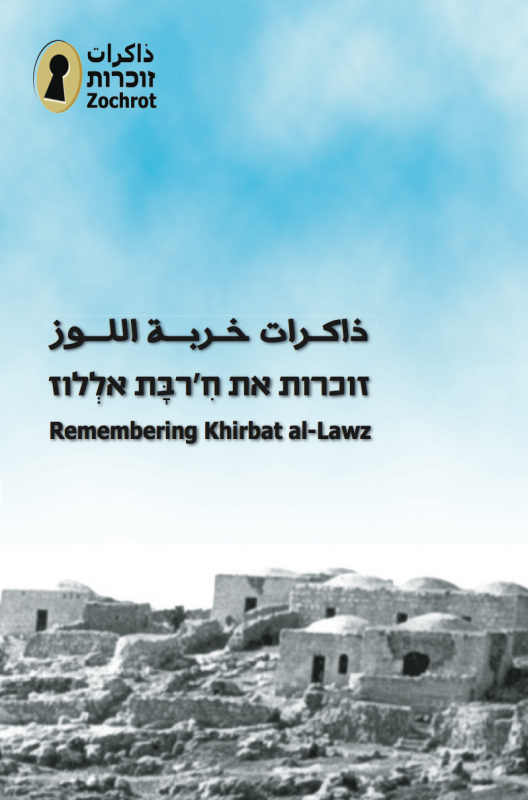Excerpt from the booklet:
Khirbat al-Lawz history
Khirbat al-Lawz is located on the hill side of one of the most beautiful mountains in the Jerusalem region. From the top of the mountain at 788 meters you can see all around as far as the hills of Ramalla, Jerusalem, Beit- Lahem, and down to the Jafa region. The village was formed few hundreds years ago.
On the village grounds there are remains from older section including old cave tombs.
The name of the village Khirbat al-Lawz in Arabic comes from the many almond trees (Lawz) planted around the ruins of an older settlement (Khirbah). In the spring time the village mountain blossoms with white flowers of the almond trees. 500 hundred people lived in the village on 1948. Half belonged to the Shaqla family led by its Mukhtar Jaaber Hassan (Abu Tabeikh) and about half to the Yahya family led by its Muakhtar Ali Ankir.
There are three springs around the village and seven wells with drinking water. Ein al-Quff on the outskirts of the village gave water to a large farming area. The spring water came in a duct, to a built water hole on the hill slopes. The farmers shared the water between them by holding in the water a long stick with markings on it that showed how much water each farmer could take.
The village people were farmers growing mainly olives, grapes, figs and farm animals mainly sheep and chicken. The village began to prosper after 1938 when large farm areas where developed to supply food to the region during World War II. A new section of the village was built outside the old section. Every evening after work, the man would gather in the village center to talk, smoke, drink and sing until late at night.
During war times the younger generation joined the commander Abd al-Qaddir al-Husieni. Most famous of them where Jaber Hassan (Abu Tabeikh), Radwan Hassan, Mahmud Khalaf, and Ali Hassan Jaber that was killed when he set a bomb on the Jafa Jerusalem road.
In 1948 , during the Israeli military operation Dani the near by village of Suba was occupied on July 13 1948 . The same day and next night the village people left the area, together with the people of the neighbor village Sataf. The village today is in a nature reserve. All houses are destroyed, but it is possible to locate the exact location of each home. No paved road leads to the place, only a dirt road. The place was chosen in the fifties to be the training area of a top secrete commando unit named 101. The commander of the unit was Arik Sharon.
Dan Golan, www.palestineremembered.com/Jerusalem/al-Lawz,-hirbat/Story1498.html
Download File



